Italian armed forces to the beginning of the invasion of Ethiopia
The area of Abyssinia was 3,5 times Italy's area (without colonies). The capital Addis Ababa was located almost in the center of the country. Abyssinia could become the resource base of Italy, since its bowels were rich in minerals, including gold and oil. The diverse climatic conditions of the country and fertile soils made it possible to develop agriculture (2-3 harvest per year), cattle breeding, cotton growing, etc. Abyssinia was a poor agrarian country. At the same time, there was little bread and in the conditions of the war it was bought in Anglo-Egyptian Sudan. The main export goods were raw leather and coffee. Industry was present only in the form of crafts.
Abyssinia is distinguished by the fact that most of the territory is filled with high mountains, on which terrace-like mountains of 2500-3500 are towering. They are separated by a wide depression (rift) in the center of the country, which begins in the depths of Africa, near Lake Tanganyika. The depression ends at the Red Sea and divides the mountains into the northern (Eritrean) and southern (Somali) ranges.
Mountain gorges are impassable. The Eritrean Mountains represent a series of frontiers for a consistent defense to the north and northeast. The northern part of the Eritrean Range is located in Eritrea, which made it easy for the Italians to start the offensive. The mountainous terrain of the country facilitated defense and partisan actions and at the same time worsened the possibility of using technology. The most convenient for the offensive was the strip in the area of the fault. But here in the east was the desert of Danakil. Thus, for the Blitzkrieg, troops were needed that were ready to fight in the mountain and desert theater, and the corresponding equipment.
Of the water lines, the Takkese River with its tributaries played the greatest importance. On the northern front, the border was the river Mareb. Lake Tana, which was important for irrigating cotton plantations in Sudan and Egypt (the Blue Nile flowed out of it), was the subject of a dispute between England and Italy. On the Blue Nile near Sennar, the British in 1925 built a dam to irrigate the fields. This grand structure gave Britain a reason to demand control over the regime of the Blue Nile in north-western Abyssinia. In the south, near the fault, a chain of lakes and a number of rivers flowing from the Somali range covered Addis Ababa from the Italian side of Somalia. In many parts of the east of the country during the drought there was an acute problem of water supply. The main forest tracts were located in the basin of the Takkaz River and along the rivers of the southern slope of the Somali Range. These forests allowed guerrilla operations.
From June to September, the so-called the period of "big rains", which created great difficulties in using aviation and mechanized transport, and also seriously raised the level of rivers and other bodies of water. Therefore, the Italian command planned a blitzkrieg to complete the hostilities before the "big rains." In addition, in the area of the Somali Range and Addis Ababa there was also a period of “small rains” - from March to May (they were brought by monsoons from the Indian Ocean).
In Abyssinia, the road network was poorly developed. Almost all the ways were for the pack transport. With the northern operating direction coincided so-called. The “imperial” path is the caravan road from Eritrea to Addis Ababa. The same routes led from the south to the second most important city of Ethiopia - Harar. The road between Addis Ababa and Dessier, with appropriate repairs, allowed for car traffic. This road could be extended to the port of Assab, which the Italians considered. The Ethiopian capital was connected by a single-track railway to the French port of Djibouti, but this road was a French concession. In addition, the Abyssinians could use two roads to communicate with the outside world (during the war with Italy). Two roads went from Addis Ababa to Gallabat and Kurmuk (Sudan), one road from Harar to British Somalia. These ways could be used to obtain grain and ammunition. Thus, there were few communications in Abyssinia, which required serious road works and road protection from Italians.
The population of the country numbered 12 million. The main core of the population was the Amhara group (5 million). Their language was dominant. In Abyssinia dominated the feudal and patriarchal structures. Between the emperor (Negus) and the great princes (races) there were major contradictions on domestic policy issues related to the modernization of the country, the creation of a centralized state, a regular army and reforms aimed at the final elimination of slavery. Separate races, dissatisfied with the policy of centralization and modernization of the country, which led to the loss of power and income, have repeatedly revolted and had connections with European powers interested in the weakness of Ethiopia. As a result, Italy could rely on the Ethiopian collaborators, traitors, who put their personal interests above national ones. In addition, contradictions between the feudal class and the peasant masses, mostly landless, grew. In Ethiopia, rebellions began more than once.
Thus, the external enemies of Ethiopia could use part of the feudal lords who were dissatisfied with the modernization of the country, as well as national and religious contradictions. The technical backwardness of the country, poorly developed transport and communications, the lack of food security, the presence of dependent tribes and slaves weakened the country's defense capability.
Benito Mussolini meets with Ethiopian traitors in Rome
Armed forces of the parties to the beginning of the war. Italy
The Italian command, preparing for war, proceeded from two basic conditions. First, due to political complications in Europe, it was impossible to weaken the armed forces in Italy. Therefore, in return for divisions sent to Africa, new ones were immediately formed. As a result, the army in the metropolis not only did not decrease, but even increased. Mussolini boasted that he would keep 1911-1914 recruits under arms. birth until it deems it necessary, and that “900 thousand soldiers fully provide our security ... They are equipped with the latest weapons, issued by ... military factories ", which" are working at full speed for several months. "
Secondly, it was recognized that it was necessary to send such forces to Abyssinia in order to end the war as soon as possible. Already during the war, as it became clear that Italy was in no danger to Europe and the world community was indifferent to the tragedy of Abyssinia (except the USSR), Italy carried out additional mobilization and strengthened the colonial grouping.
Italian soldiers go to Abyssinia
Italian troops consisted of three types of divisions:
- Regular troops consisted of mobilized soldiers. Had a good combat training.
- Blackshirt divisions - voluntary national security police. These were the armed units of the National Fascist Party, organized by Mussolini. They included representatives of the nationalist intelligentsia, retired officers, bourgeois youth, and landowners. The blackshirts, though inferior in combat training to regular troops, but had a high fighting spirit, so they were interspersed into army corps and task forces.
- Colonial (native) divisions did not have a solid organization and were included in the regular troops. They were fairly well prepared and knew the local conditions well. But these units did not enjoy the full confidence of the command, so they were distributed between regular and fascist formations. Thus, the expeditionary army had a rather motley composition.
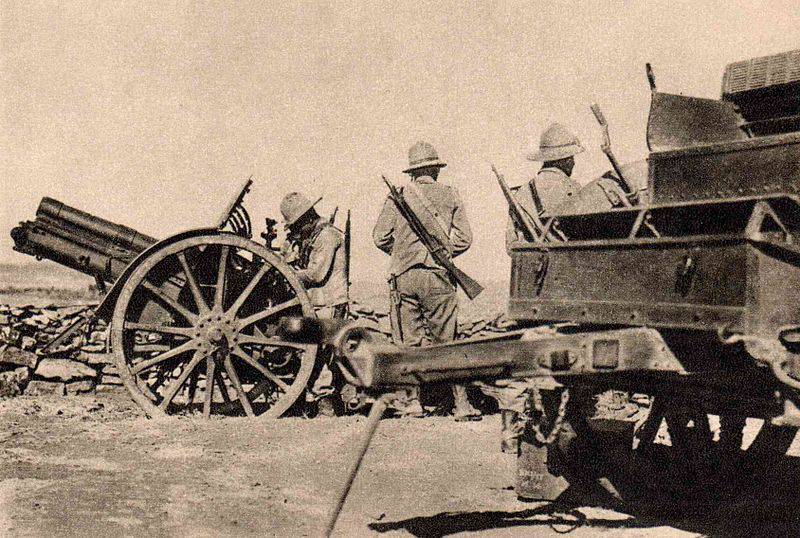
Italian gunners
The first mobilization order was announced on 5 on February 1935 of the year. By the end of August 1935, the mobilization of troops originally intended for the war with Abyssinia was completed. On the whole, 5 regular, 4 black-shirt (fascist) and 2 native divisions were mobilized in several moves and sent to war. In addition, separate militia, police and native units that were not part of the divisions were formed and sent to the front. This amounted to more than 270 thousand soldiers. Together with the mobilized workers - 30 thousand Italians and 45 thousand local people of Eritrea and Somalia, up to 350 thousand people were concentrated on the Abyssinian front at the beginning of the war. Already during the war, Italy sent reinforcements. The Italian forces rose to 500 thousand men, including the 9 divisions of the regular army (7 infantry, 1 Alpine and 1 motorized), 6 division of the fascist militia. At the end of the war, the expeditionary army numbered up to 21 divisions, including 7 Black Shirt and 4 Colonial, 1 Cavalry Brigade and 35 individual battalions. Thus, Italy formed a powerful expeditionary army to end the war in a short time and not to delay the fighting.
Italian troops were equipped according to local conditions. In addition, they tried to ensure that the summoned contingents could quickly become familiar with local conditions. The infantry divisions, which were transferred to the Eritrean (Northern) Front, sent the natives of the highland regions of Italy; the troops destined for the Somali (Southern) Front were replenished with natives of Sicily, as well as with people who had experience of living in the subtropical and tropical conditions of South and Central America. Colonial (native) troops were replenished by the indigenous population of Eritrea, Somalia and Libya. The population of Eritrea and Somalia provided up to 15% of the expeditionary force.
Italy quite seriously preparing for war, the lessons of the last war, which ended in defeat, remembered. Troops completed tactical training in highland areas. For officers, many of whom knew the conditions of the colonial service, special courses were organized. The Italian General Staff issued a special instruction for action in the Abyssinian theater. The troops received the task, so that they, capturing a certain area, carefully mastered the occupied territory, built roads, bridges, adjusted the work of the rear. It was necessary to continue the offensive actions. Italy before the war organized in Ethiopia a reconnaissance network that studied the country, bribed feudal lords,
and led disruptive propaganda. This activity was facilitated by the absence of the Abyssinian security service and the use of diplomatic, trade, research missions.
Given that Britain could cut off the main communication, through Suez, Italy was serious about preparing the areas where the expeditionary army is concentrated in Eritrea and Somalia. If necessary, they were to become the main bases for the army. Expanded ports, built roads, airfields, etc. First of all, increased the capacity of ports in Eritrea. So, after upgrading, the main port of Massawa could accept more than 2 steamers instead of 3-40 ships a day. The port of Assa was also reconstructed, in Somalia, Italy, the ports of Mogadishu and Bender-Qasim. In addition to the already existing railways, the Massawa-Asmara line was built, Mogadishu-Lug was built. Since the main forces were concentrated in the north, then apart from the railway, the Massau-Asmara highway and the cable car were built. The ports of Mogadishu and Bender Qasim were connected by a highway. The airfield network was equipped and communication lines were laid. To ensure a quiet concentration of the arriving troops in the border strip, small forts with wire barriers were prepared. They were originally defended by colonial troops, and then regular units began to be located behind them. However, the Abyssinians did not prevent the enemy, they only hastily strengthened their border posts.
Much attention was paid to the army’s water supply, so that it was particularly important in eastern Ethiopia, where droughts occurred. Special units were introduced into the expeditionary army, which, on the one hand, were to build a network of artesian wells, on the other hand, deliver water to the troops by tank trucks (200 machines of 2500 liters each, for 10 thousands of people) and transport aircraft in desert areas. For the deployment of troops in the hot regions of Eritrea and Somalia, barracks were built of materials with low thermal conductivity. In the main points of the colonies built warehouses for supplies, placed refrigerators for meat. The ration of a soldier of the expeditionary army consisted of bread, meat, sugar, coffee, canned vegetables, fats and spices. A soldier’s stock of supplies consisted of 2 liters of water, 4-day rations of food (crackers and canned food). To do this, I had to reduce my personal ammo from 200 to 110 ammo.
General command of the Italian troops in East Africa was carried out by General Emilio de Bono (from November 1935, Field Marshal Pietro Bodoglio). Italy launched the main strike force in Eritrea, where the 10 regular and fascist divisions arrived. Of these, the Northern Front was formed, consisting first of 3 and then 5 of corps (75% of all the forces of the expeditionary army). The front struck Dessier (Dessie) and further on the Ethiopian capital. At the end of the war on the northern front there were 5 corps and two groups of generals Kouture and Mariotti to secure the flanks. The southern front in Somalia was of secondary importance and had to link as many Ethiopian troops as possible, advancing in the direction of Harer and Addis Ababa. Here the troops were combined into two operational groups (up to two divisions). The southern front was commanded by Rodolfo Graziani. There was also a central operational direction (up to one division). The troops of the Central Front were to provide the flanks and communications of the Northern and Southern factions and advance from the Assab area in the direction of Dessye.
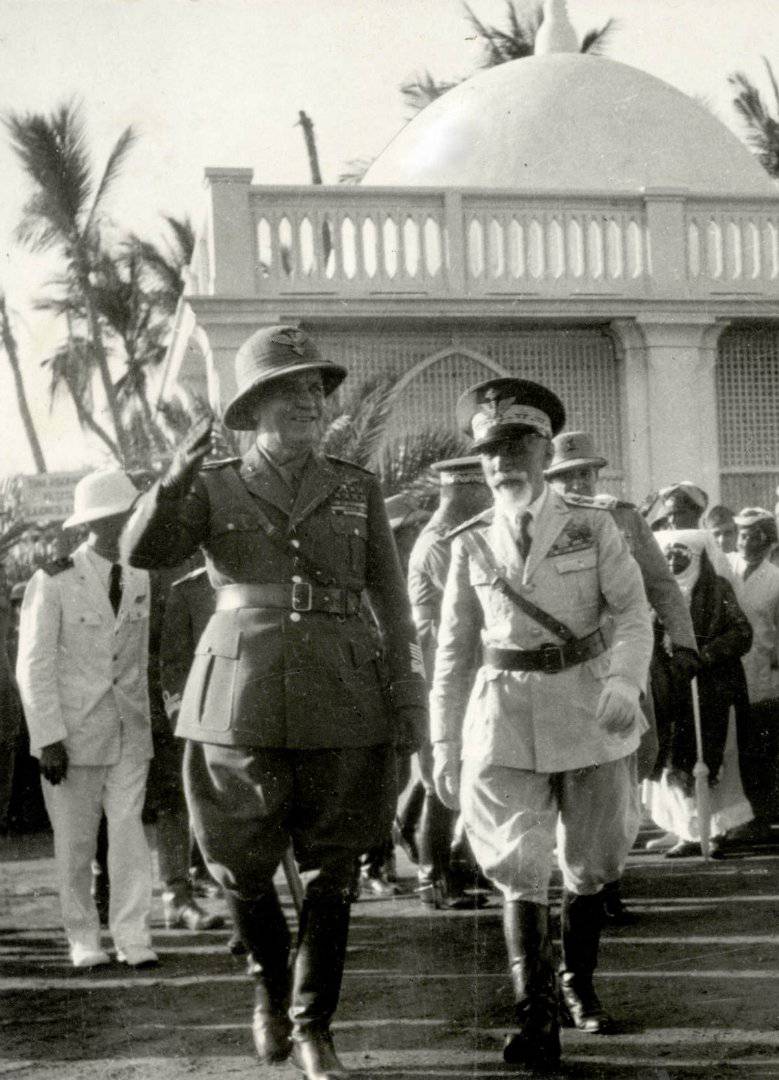
Field Marshal Badoglio (left) and General de Bono (right)
Italian soldiers
To be continued ...
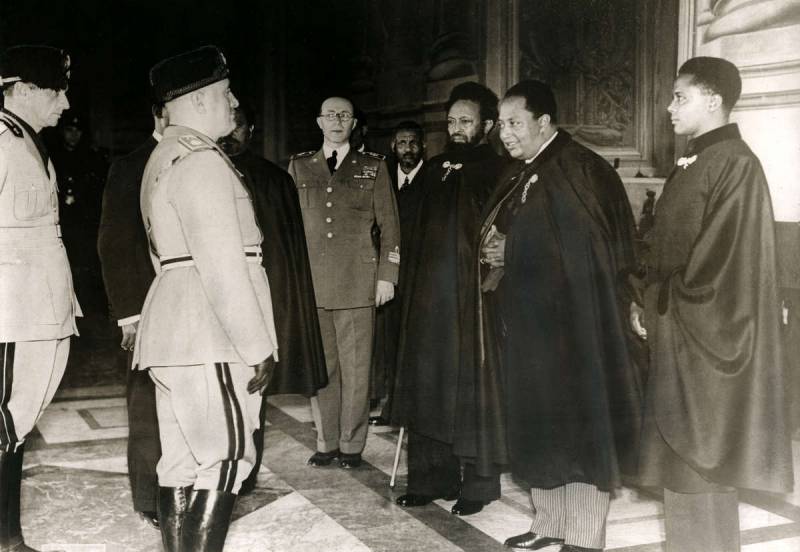
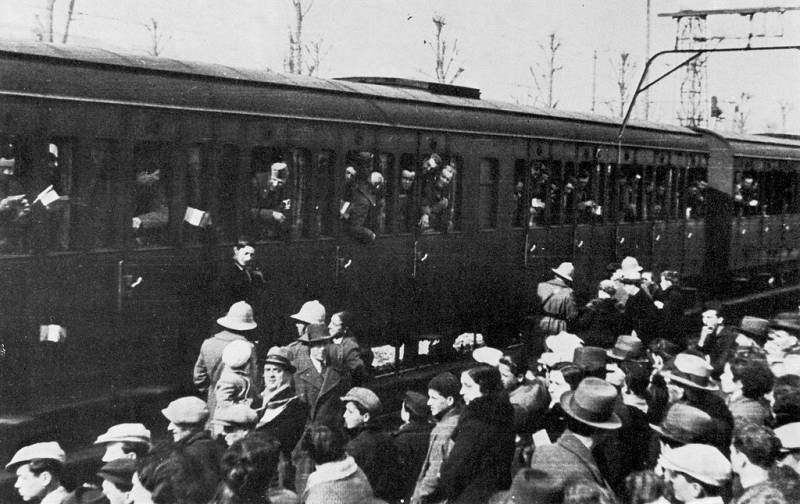
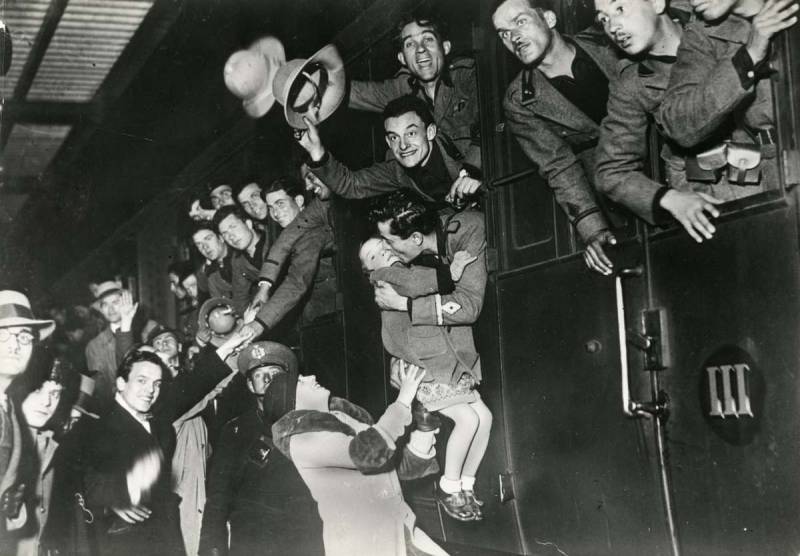
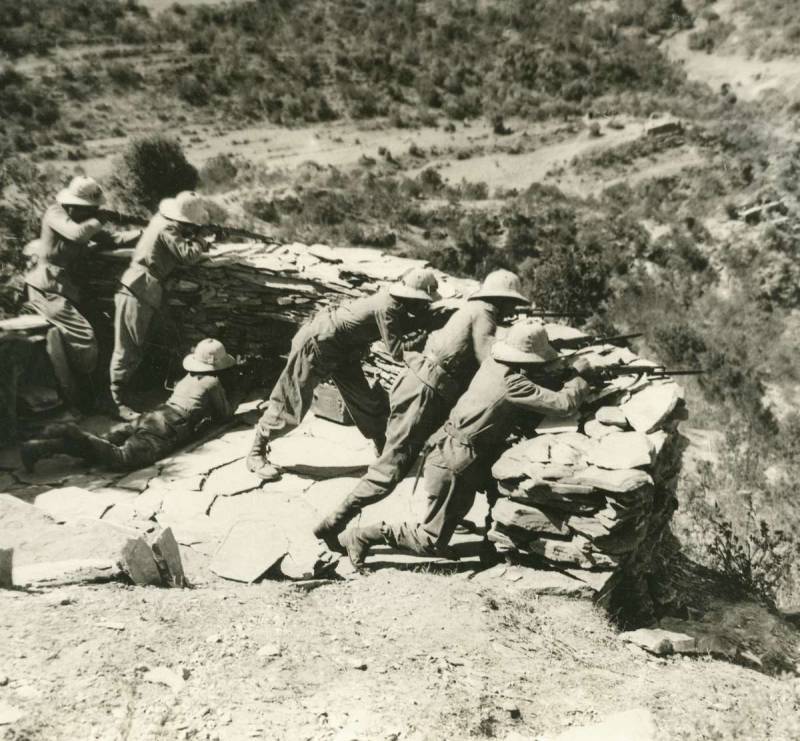
Information